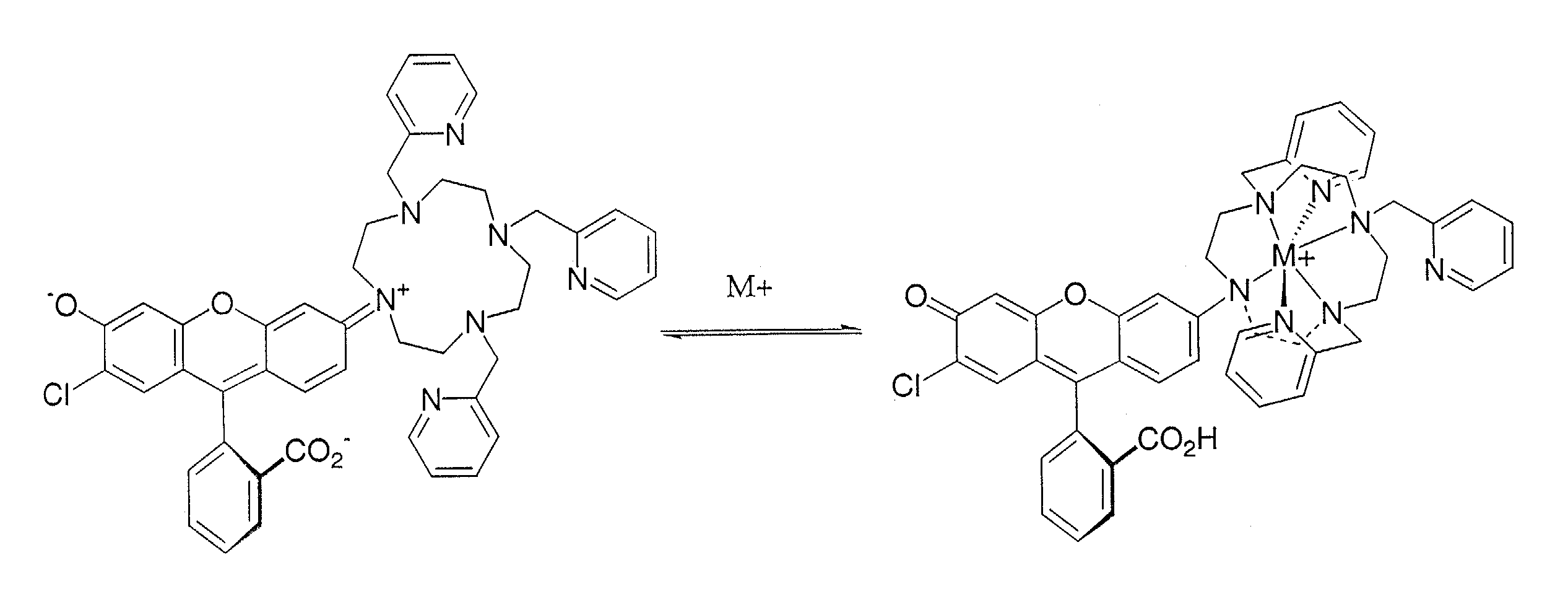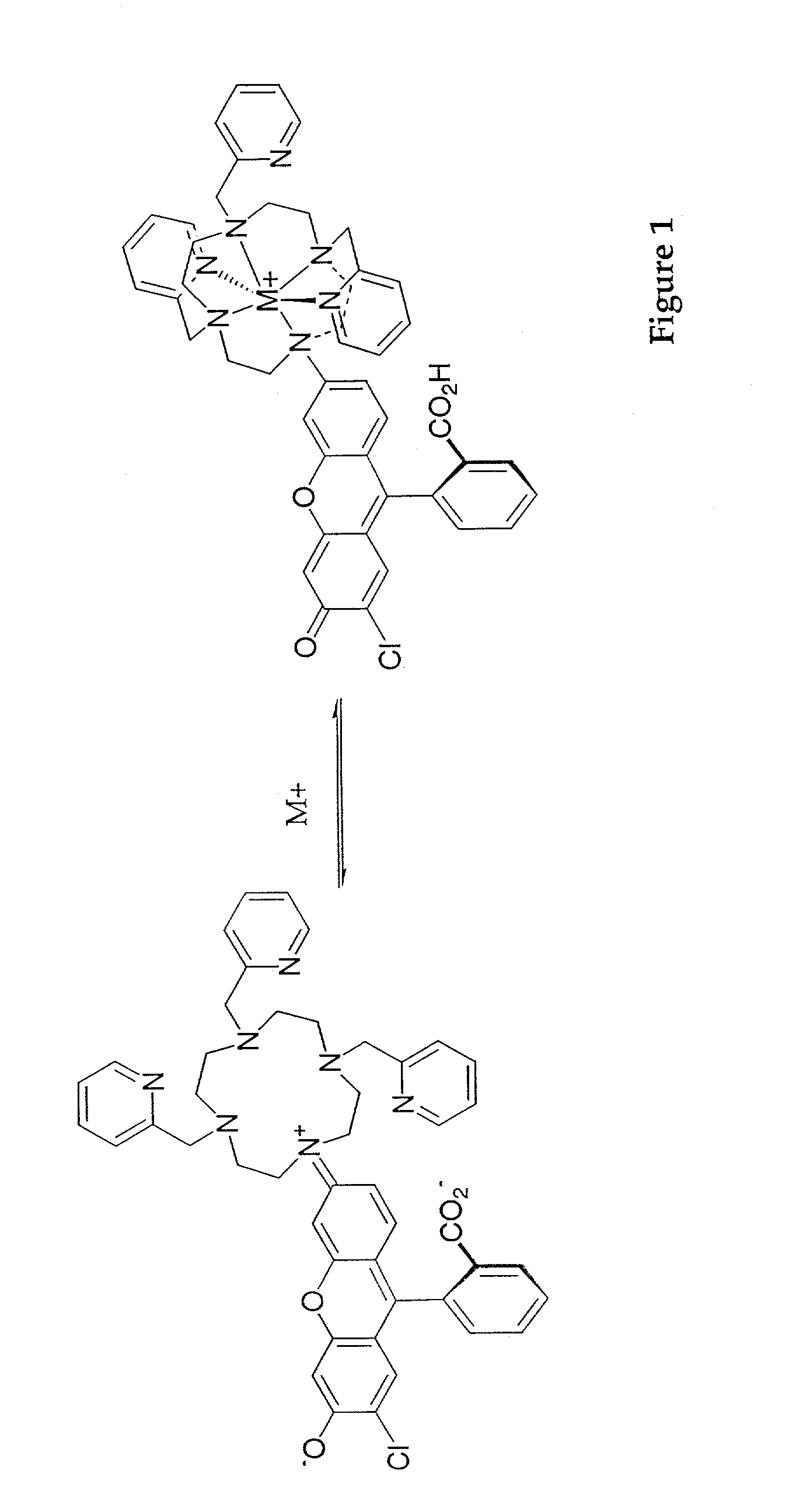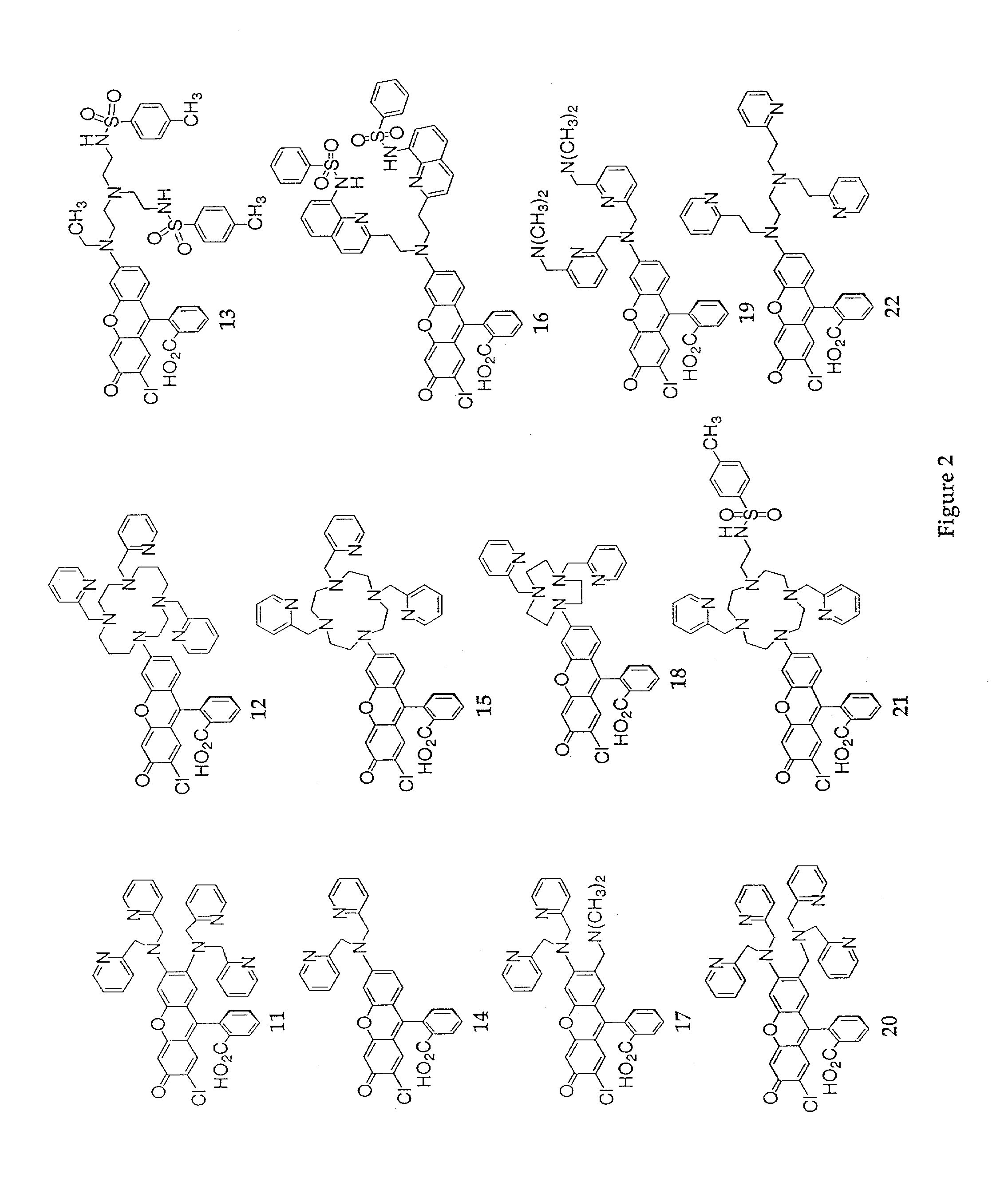Fluorescent metal sensors, and methods of making and using the same
a metal sensor and fluorescence technology, applied in the field of fluorescence metal sensors, can solve the problems of significant changes in fluorescent properties observed, and achieve the effect of high quantum yield
- Summary
- Abstract
- Description
- Claims
- Application Information
AI Technical Summary
Benefits of technology
Problems solved by technology
Method used
Image
Examples
Embodiment Construction
I. Definitions
[0034]For convenience, before further description of the present invention, certain terms employed in the specification, examples and appended claims are collected here. These definitions should be read in light of the remainder of the disclosure and understood as by a person of skill in the art.
[0035]The articles “a” and “an” are used herein to refer to one or to more than one (i.e., to at least one) of the grammatical object of the article. By way of example, “an element” means one element or more than one element.
[0036]The terms “Lewis base” and “Lewis basic” are art-recognized and generally include a chemical moiety, a structural fragment or substituent capable of donating a pair of electrons under certain conditions. It may be possible to characterize a Lewis base as donating a single electron in certain complexes, depending on the identity of the Lewis base and the metal ion, but for most purposes, however, a Lewis base is best understood as a two electron donor....
PUM
| Property | Measurement | Unit |
|---|---|---|
| emission wavelengths | aaaaa | aaaaa |
| excitation wavelengths | aaaaa | aaaaa |
| pKa | aaaaa | aaaaa |
Abstract
Description
Claims
Application Information
 Login to View More
Login to View More - R&D
- Intellectual Property
- Life Sciences
- Materials
- Tech Scout
- Unparalleled Data Quality
- Higher Quality Content
- 60% Fewer Hallucinations
Browse by: Latest US Patents, China's latest patents, Technical Efficacy Thesaurus, Application Domain, Technology Topic, Popular Technical Reports.
© 2025 PatSnap. All rights reserved.Legal|Privacy policy|Modern Slavery Act Transparency Statement|Sitemap|About US| Contact US: help@patsnap.com



